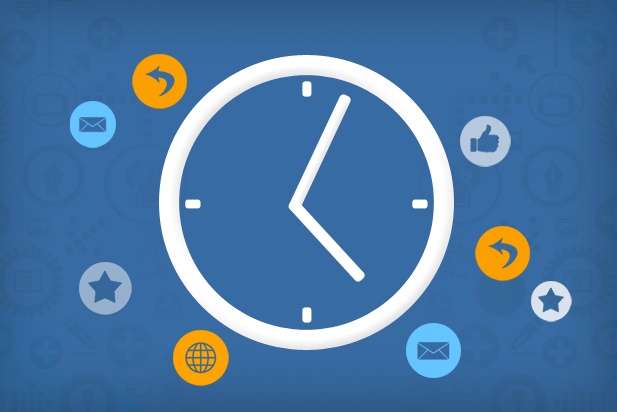If you’re managing a social media page then you’ve more than likely heard the phrase ‘peak audience time’. It’s a mainstay in countless top 10, 5 and probably 3 tips for success on social media. Whilst, in principal, there is nothing wrong with this, there is, in reality, confusion as to what this actually means and whether you should be trying to post key content within that period.
Pretty much every person who refers to ‘peak audience times’ means one thing and one thing only; the time at which the greatest number of fans or followers is online – which is fine. No confusion there. However, as I suggested in a previous post reach on Facebook (and social media in general) is a secondary metric and one not to be overly concerned by. Therefore, in order to tackle the real problem with ‘peak audience times’, let’s recap a little…On average, a Facebook user will have around 1,500 potential pieces of content they could be seeing in their News Feed, per day. As you’re probably thinking now, that is far too much information for one person to consume and a lot of people vying for the attention of one person.
[Tweet "Posting between, 8pm-10pm may not be the best thing for your brand"]
It is also exactly why Facebook doesn’t show you all of this information. Instead, it will only display a small fraction of this (around 300 pieces of content) based on a myriad of factors that are unique to each user.
What does that mean for us marketers? It means that if you are going to be included in that magic 300, your content has to be exceptional. It has to be of a high enough quality that it will be shown in the News Feed above 1,200 other posts by actual friends as well as other brands.
With that in mind, if we now reconsider the concept of ‘peak audience times’ things start to change a little. For a start, you can pretty much guarantee that if you’re focusing on these time periods that other brands are too (again, just look at the many blogs recommending you do so). This means that whilst this may well be prime time for your audience, it’s also prime time for News Feed competition. It’s social media rush hour and everyone is trying to get to the same place.
Therefore, whilst saving your key pieces of content for this time may well reach the greatest number of people there is no guarantee that they’re going to be taking any notice of it. What’s more, you’re now likely to be going toe-to-toe with every other brand’s key piece of content and therefore, (ready for metaphor number two?) your post is all of a sudden a small fish in a big pond.
However, at this point, it’s important to note that this isn’t necessarily a bad thing. It all comes down to what your goals are. If your goal is brand awareness then all is well and good. Fundamentally, brand awareness online is about ensuring that the largest number of people see whatever it is you want to push and therefore focusing on the time period to deliver that is exactly the right thing to do.
On the other hand, if your goal is based around getting clicks, likes, shares, comments, retweets etc. (in other words; engagement) then posting at this time may well not be the best thing to do. Instead, you may want to focus your efforts towards times of day that are less busy. On top of this, Facebook’s algorithms will display content with greater engagement rates in News Feeds more often than those with lower engagement rates. Therefore, by focusing on achieving better engagement you will naturally be increasing your reach anyway and thus fulfilling that goal of brand awareness.
To use ourselves as an example – our target audience is a combination of those working in digital marketing and brands looking to improve their digital marketing. What this means for our peak time is that although the largest proportion of our audience is online between 8pm-10pm, the topics we post about are relevant to their day-to-day jobs. And generally speaking people want to switch off and not think about business once they leave the office, not read something that is going to take them straight back to work mode. This means that in terms of engagement, our peak time is actually during office hours; around 3pm.
 Klood Peak Audience Time Based On Reach
Klood Peak Audience Time Based On Reach
What does this mean? That, contrary to popular references, there isn’t one, almighty ‘peak audience time’ - it’s dependant on your post and page level goals. Posting between, for example, 8pm-10pm when people are theoretically ‘dual screening’ may actually not be the best thing for your brand so experiment a little and find what time may to achieve what you want.
Stay Updated with Our Latest Insights
Get expert HubSpot tips and integration strategies delivered to your inbox.



